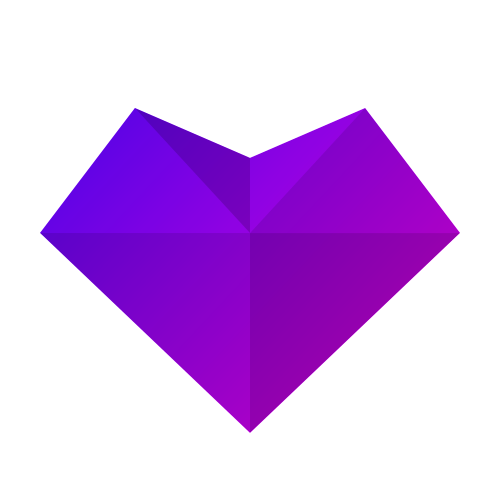Initia (INIT) is a modular Layer 1
blockchain network designed to support consumer-friendly applications, particularly in the world of gaming, social apps, and emerging AI tools. Built with Cosmos SDK and MoveVM, Initia aims to simplify the developer experience and provide users with seamless interactions between different Layer 2 rollups. INIT is the native token powering this evolving multi-chain ecosystem.
Key Features of Initia
Modular Architecture: Initia combines Layer 1 and Layer 2 technologies, offering a base blockchain (Initia L1) and a network of customizable rollups, making it easier to build and manage blockchain apps.
Interwoven Stack: Provides developer-friendly tools out of the box, including solutions for bridging, governance, liquidity, and more.
InitiaDEX: Powers liquidity across the network, while the VIP program and INIT token reward active users and projects.
Ethereum: The World Computer
---
1. What is Ethereum?
Ethereum is a decentralized, open-source blockchain that allows developers to build and deploy smart contracts and decentralized applications (dApps).
It was proposed in 2013 by Vitalik Buterin, a Russian-Canadian programmer, and officially launched in July 2015.
Where Bitcoin was designed to be "digital money," Ethereum was designed to be a platform — a foundation where applications could run without downtime, fraud, control, or interference from a third party.
In short:
Bitcoin = digital gold.
Ethereum = a global, programmable computer.
---
2. Key Features of Ethereum
Smart Contracts:
Programs that automatically execute actions when certain conditions are met — without the need for an intermediary.
dApps (Decentralized Applications):
Apps built on the blockchain that are censorship-resistant and transparent.
Ether (ETH):
Ethereum’s native cryptocurrency. It is used:
To pay for transactions ("gas fees"),
As a store of value,
And as a medium of exchange within dApps.
Decentralized Finance (DeFi):
Ethereum sparked a financial revolution where lending, borrowing, trading, and investing can happen without banks or brokers — all using smart contracts.
NFTs (Non-Fungible Tokens):
Ethereum is the birthplace of NFTs, unique digital assets representing ownership of art, music, collectibles, and more.
---
3. How Ethereum Works
Blockchain:
Ethereum’s blockchain records transactions and the state of smart contracts across thousands of nodes globally.
Proof of Stake (PoS):
Originally, Ethereum used Proof of Work (like Bitcoin).
In September 2022, Ethereum transitioned to Proof of Stake through an upgrade called "The Merge," making it more energy-efficient (reducing energy use by over 99%).
Gas Fees:
Every action on Ethereum (sending ETH, executing a smart contract) requires paying a gas fee.
Gas fees fluctuate based on network demand.
Ethereum Virtual Machine (EVM):
The EVM is the engine that understands and executes smart contracts. It acts like a world computer shared across all Ethereum nodes.
---
4. Strengths of Ethereum
---
5. Challenges and Criticisms
High Gas Fees:
At times of high network usage, transaction costs can become very expensive.
Scalability Issues:
Ethereum currently handles around 15-30 transactions per second, which is slow compared to traditional payment systems.
Competition:
Other blockchains like Solana, Avalanche, Cardano, and Polkadot offer faster and cheaper alternatives.
Complexity:
Building and interacting with smart contracts requires technical knowledge, making user experience sometimes difficult.
---
6. Major Upgrades and Roadmap
The Merge (2022):
Transitioned from Proof of Work to Proof of Stake.
Shard Chains (Upcoming):
Future plans include splitting Ethereum’s data into smaller pieces called shards, which will massively increase transaction capacity.
Layer 2 Solutions:
Technologies like Optimism, Arbitrum, and zk-Rollups are being developed to help scale Ethereum by processing transactions off-chain and then posting results back to Ethereum.
Ethereum 2.0 Vision:
Not a single upgrade, but a series of changes aimed at making Ethereum more scalable, secure, and sustainable.
---
7. Real-World Use Cases of Ethereum
Finance:
Borrow, lend, trade assets without banks (DeFi platforms like Uniswap, Aave).
Art and Gaming:
Create and trade NFTs (CryptoPunks, Bored Apes, Axie Infinity).
Identity and Ownership:
Secure, verifiable ownership of assets without intermediaries.
Organizations (DAOs):
Decentralized Autonomous Organizations allow groups to govern projects without a CEO or traditional board.
Supply Chain Management:
Tracking products transparently through the blockchain.
---
8. Ethereum’s Place in the Crypto World
Second Largest Crypto:
After Bitcoin, Ethereum holds the second-highest market cap.
"Internet of Value":
While Bitcoin is seen as digital gold, Ethereum aims to be the infrastructure for the digital economy.
Constant Evolution:
Ethereum is more experimental and adaptable than Bitcoin, always integrating new technologies and ideas.
---
Conclusion: The Future of Ethereum
Ethereum is not just about money — it’s about reprogramming the internet itself.
It envisions a future where finance, governance, art, gaming, and identity are decentralized, transparent, and controlled by individuals, not corporations.
Although it faces serious challenges like scalability and competition, its massive community, relentless innovation, and first-mover advantage keep it at the heart of the blockchain revolution.
In short:
Bitcoin brought financial freedom.
Ethereum brings digital freedom.
---
$ETH

$INIT :The Modular Blockchain Narrative
Modularity became a huge buzzword with projects like Celestia (data availability layer), Optimism (with the OP Stack), and Cosmos (app-chains).
The whole idea: instead of one blockchain doing everything (security, execution, consensus, settlement, data), split it into layers specialized for different tasks.
But the problem? It’s complex. Setting up a modular chain usually requires deep technical knowledge and coordination between different platforms.
2. Initia’s Approach: Integrated Modular Stack
Initia is modular, but vertically integrated.
L1: Initia has its own Layer 1 for settlement, consensus, and security.
L2s (called "Minitias"): People can easily launch their own customized rollups that connect to Initia.
Key innovation:
Initia abstracts away the messy complexity. Developers can spin up a secure, sovereign chain (a Minitia) without worrying about coding everything from scratch.
It’s like if you combined Cosmos SDK + Rollup-as-a-Service + native interoperability into one neat package.
3. Why It Could Reshape the Scene
Ease of Use: Setting up chains becomes as simple as deploying a dApp.
Native Interoperability: Minitias don’t need external bridges — they are interoperable by default using Initia’s messaging system.
Unified Liquidity: Instead of fractured liquidity like on Cosmos zones or fragmented rollups on Ethereum, Initia aims for more seamless liquidity between Minitias.
On-chain economics:
Initia uses innovations like "fractal staking" where $INIT secures both the L1 and all the Minitias — creating aligned incentives across the whole ecosystem.
4. Comparison with Existing Giants
FeatureCelestiaCosmosOptimismInitiaData AvailabilityYesNoNoYes (via its L1)InteroperabilityNoPartialPartialNativeRollup DeploymentNoMediumHard (manual)Easy (Minitias)Liquidity SharingNoNoPartialYesDev FriendlinessLow (need DA & sequencer setups)MediumHardHigh
5. Potential Risks
Execution: It's a crazy ambitious project — not guaranteed they can pull it off at scale.
Adoption: They need devs to actually choose Initia over more established ecosystems.
Competition: Celestia, Cosmos 2.0, and even Eigenlayer might introduce overlapping solutions.
6. Conclusion
Initia isn't just "another modular chain."
It's trying to merge the best of modular architecture with the simplicity of monolithic user experience. If they pull it off, they could dominate the narrative shift in 2025, especially as multichain UX becomes more important than raw decentralization.

$INIT :The Rise of Modular Blockchain Architectures: How Initia’s Layer 1 + Layer 2 Rollup Design is Shaping the Future of Web3
1. Background: The Limitations of Traditional Blockchains
Historically, most blockchains like Bitcoin and Ethereum operated in a monolithic fashion — meaning a single chain handled execution, consensus, settlement, and data availability all together.
While this approach is secure and simple, it faces major problems:
Scalability bottlenecks (slow transactions, high fees during peak times).
Poor specialization (not every application needs the same security or performance settings).
Hard to upgrade without disrupting the entire chain.
2. Enter Modular Blockchains
Modular blockchains split these responsibilities into specialized layers:
Execution Layer: Runs the smart contracts and transactions.
Consensus Layer: Ensures everyone agrees on the state.
Data Availability Layer: Makes sure transaction data is available to all validators.
Settlement Layer: Finalizes transaction results.
This separation allows each layer to be optimized for its specific job, making the whole ecosystem:
More scalable (parallel processing).
More flexible (customizable chains for different apps).
More secure (isolated risks).
Examples include Celestia, Ethereum Rollups, and now Initia.
3. Initia’s Unique Approach: Layer 1 + Layer 2 Rollup Synergy
Initia brings its own twist:
Layer 1 (L1) Blockchain: A Cosmos SDK-based foundational blockchain, focusing on settlement, interoperability, and governance.
Layer 2 (L2) "Minitias": Lightweight, customizable rollups that developers can spin up easily.
These are app-specific chains (think games, DeFi apps, social dApps) that inherit security and liquidity from the main Initia L1.
Key Features:
Shared Security: Minitias are not isolated; they share security guarantees with Initia's L1.
Native Interoperability: Assets and messages can move easily across Minitias without complicated bridges.
Enshrined Liquidity (EL): Rather than traditional Proof-of-Stake, Initia secures its network using liquidity pools — a cutting-edge idea where providing liquidity also secures the network.
Low Code Launch: Devs can launch a Minitia with minimal code — meaning faster innovation.
4. Why This Matters for Web3
Scalability Without Fragmentation:
Instead of hundreds of isolated chains, Initia creates a unified multichain ecosystem where rollups interconnect smoothly.
Lower Barriers for Developers:
New projects don't have to worry about spinning up a full chain from scratch or attracting their own validators — Initia handles a lot of the heavy lifting.
Better User Experience:
Users won't have to hop through weird bridges or wrap their assets 5 times to use different dApps.
Economic Alignment:
Liquidity providers and validators are aligned — a novel way to incentivize network security and growth.
5. Real-World Analogy
Imagine Initia as a city (L1) with hundreds of smart buildings (L2 Minitias).
Each building can be customized for its purpose (shopping mall, hospital, school), but they are all connected through the city’s infrastructure (roads, electricity, police).
This shared infrastructure model means the whole city grows together — faster, stronger, and safer — compared to isolated towns fending for themselves.
6. Potential Challenges
Security of L2s:
Even with shared security, weak Minitias could be vulnerable if not properly designed.
Governance Complexity:
Coordinating upgrades and policies across many Minitias could become messy over time.
Competition:
Other modular systems like Celestia and Ethereum Rollups are also evolving fast.
7. Final Thoughts
Initia is part of a larger movement toward modularity in blockchain architecture — a crucial evolution that could finally make Web3 applications scalable and user-friendly enough for mainstream adoption.
Its design combining modular rollups + strong native interoperability positions it as one of the early leaders in this next generation of blockchain networks.



 أقل سعر
أقل سعر أعلى سعر
أعلى سعر 






































UniLayer البيانات الاجتماعية
في آخر 24 ساعة، درجة المعنويات على منصات التواصل الاجتماعي لعملة UniLayer بلغت 3، وكانت المعنويات على منصات التواصل الاجتماعي تجاه توجه سعر عملة UniLayer صعودية. كانت النتيجة الإجمالية لعملة UniLayer على وسائل التواصل الاجتماعي 0، وجاءت في المرتبة 1380 بين جميع العملات المشفرة.
وفقًا لموقع LunarCrush، في آخر 24 ساعة، بلغ إجمالي إشارات العملات المشفرة على منصات التواصل الاجتماعي 1,058,120 مرة (مرات)، مع ذكر UniLayer بنسبة تكرار %0 ، فجاءت في المرتبة 1380 بين جميع العملات المشفرة.
في آخر 24 ساعة، إجمالي عدد المستخدمين الفريدين الذين ناقشوا عملة UniLayer بلغ 56، وبلغ إجمالي عدد إشارات عملة UniLayer 0. ومع ذلك، وبالمقارنة مع الـ 24 ساعة السابقة، بلغ عدد المستخدمين الفريدين تقليل بنسبة %30 ، والعدد الإجمالي للإشارات تقليل بنسبة %100 .
وعلى تويتر، بلغ إجمالي التغريدات 0 التي تشير إلى عملة UniLayer خلال آخر 24 ساعة. من بينها، %0 صعودية لعملة UniLayer، و هبوطية لعملة UniLayer، و%100 محايدة لعملة UniLayer.
إنّ عدد المنشورات على موقع Reddit بلغ 0 والتي تُشير إلى UniLayer خلال الـ 24 ساعة الماضية. وبالمقارنة مع الـ 24 ساعة الماضية، فإن عدد الإشارات تغيّر تقليل بنسبة %100 .
نظرة عامة على جميع مواقع التواصل الاجتماعي
3